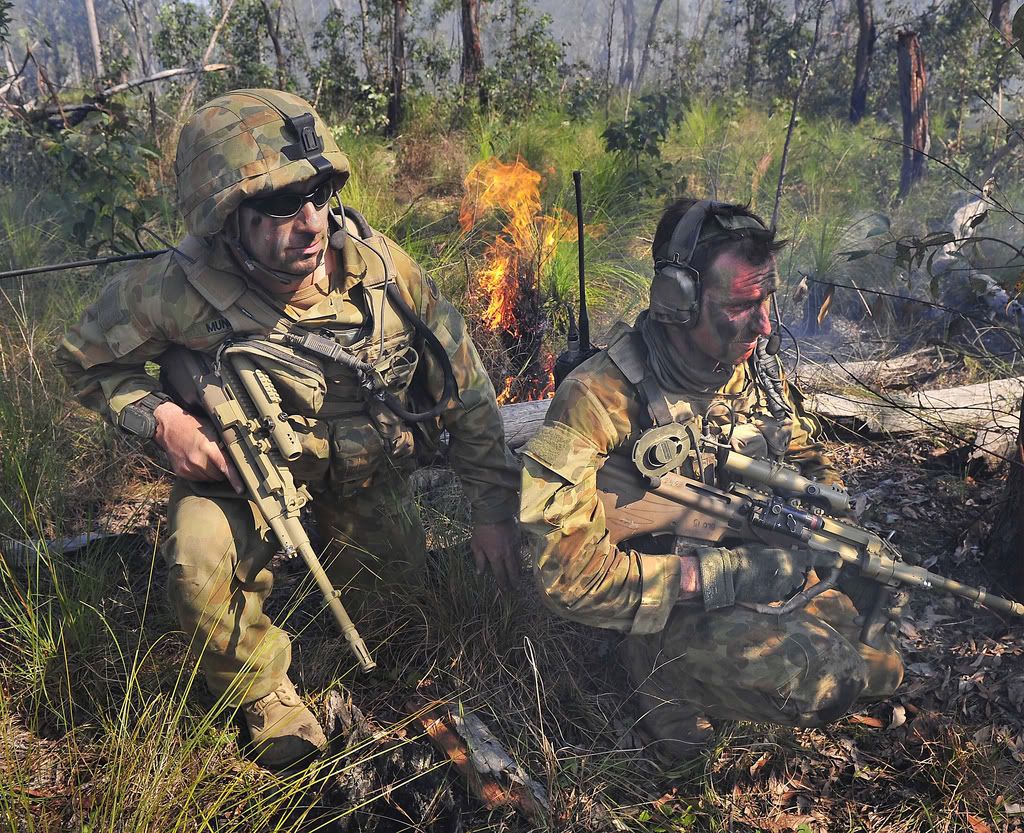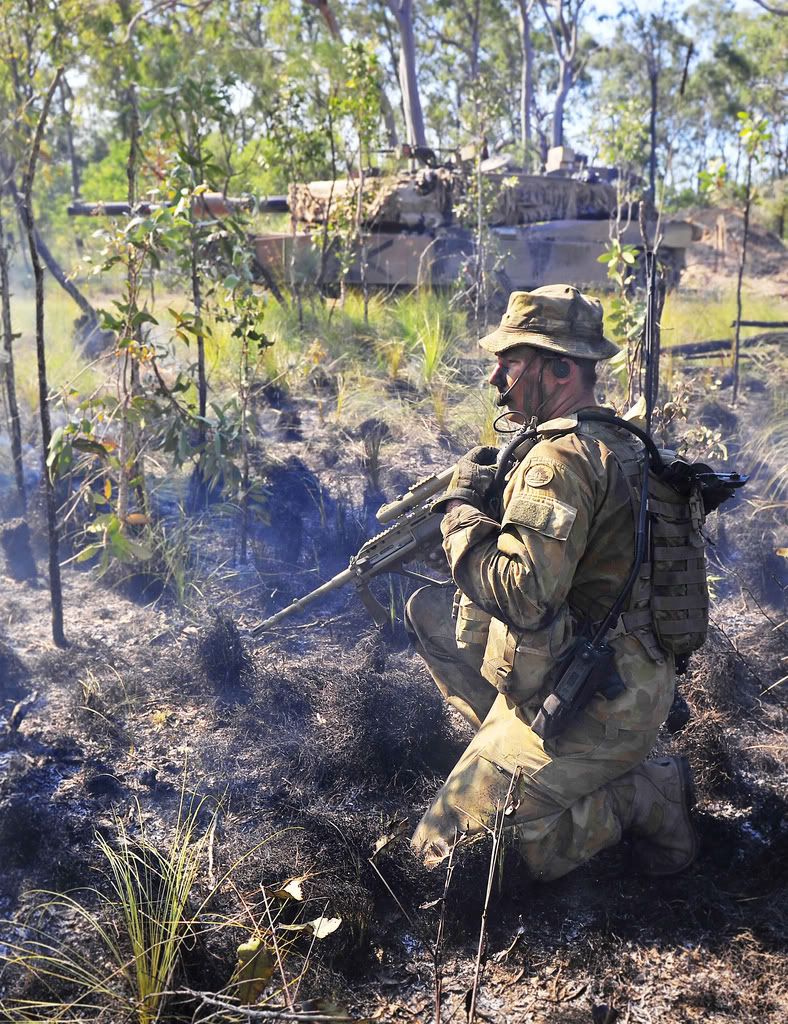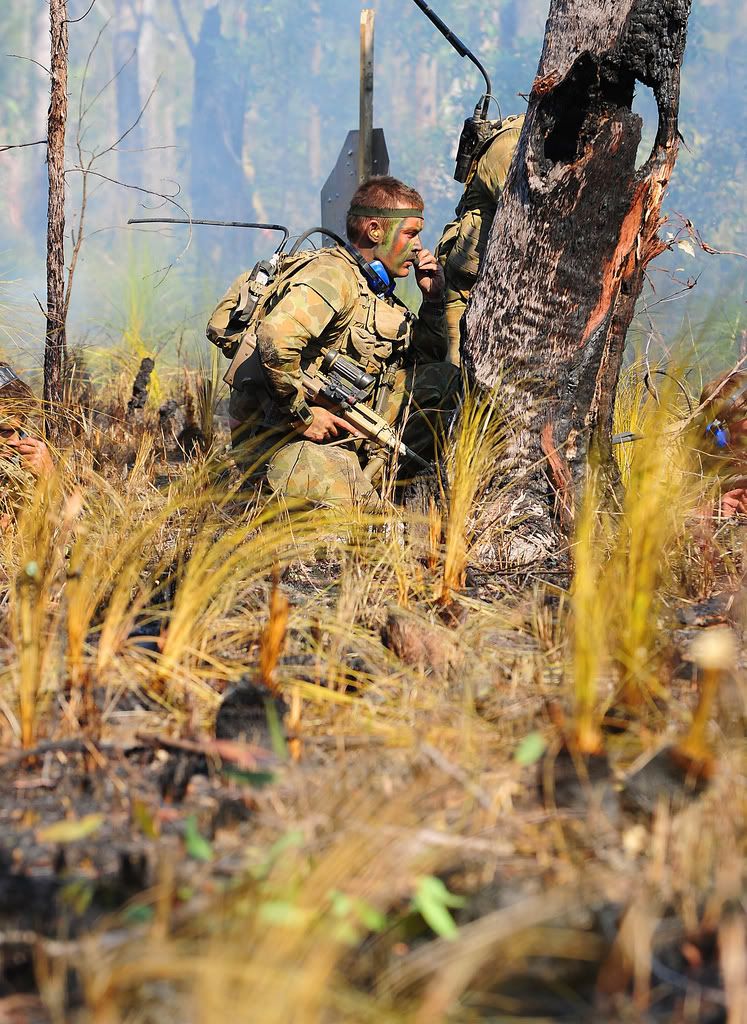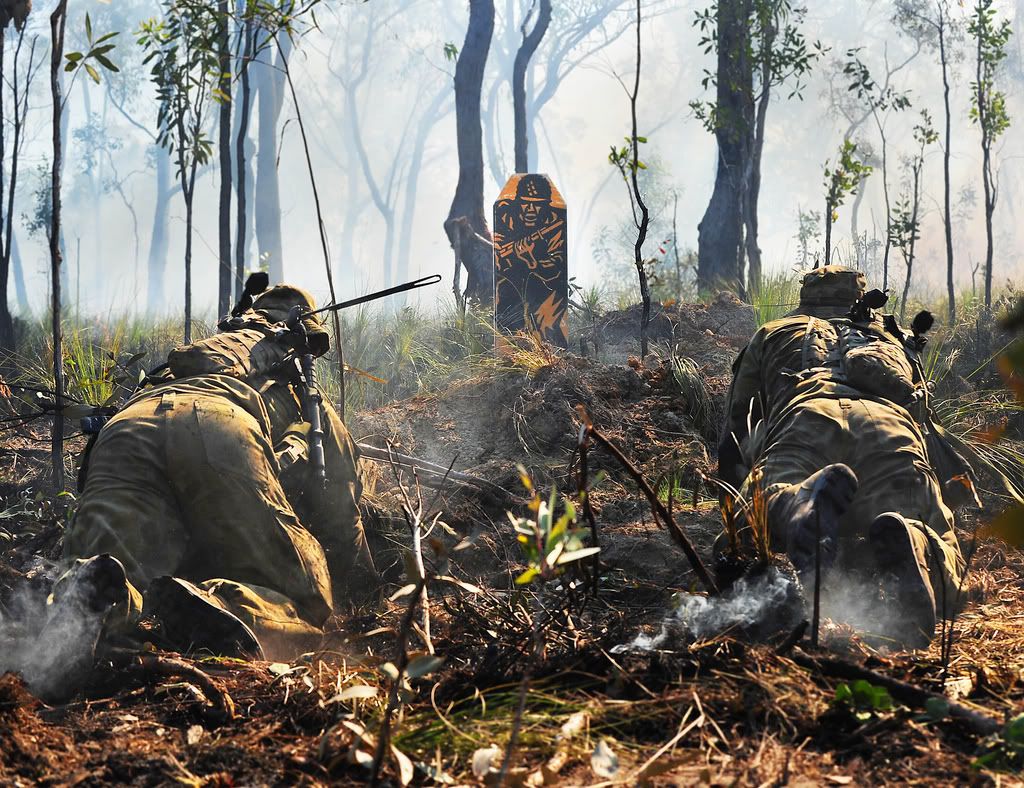Re: Argentine Armed Forces
The Tanque Argentino Mediano ("Argentine Medium Tank"), or TAM, is the main battle tank in service with the Argentine Army. Lacking the experience and resources to design a tank, the Argentine Ministry of Defense contracted German company Thyssen-Henschel. The vehicle was developed by a German and Argentine team of engineers, and was based on the chassis of the German Marder infantry fighting vehicle.
The TAM met the Argentine Army's requirement for a modern light-weight and fast tank with a low silhouette and sufficient firepower to defeat contemporary armored threats. Development began in 1974 and resulted in the construction of three prototypes by early 1977 and full-scale production by 1979. Assembly took place at the local 9600 square metre TAMSE plant, founded for the purpose by the Argentine government. Economic difficulties halted production in 1983, but manufacturing began anew in 1994 until the army's order of 200 tanks was fulfilled.


The TAM series includes seven different variants, such as a 155 mm (6.1 inch) self-propelled howitzer and a self-propelled mortar vehicle. In total, over 280 such vehicles were built, including armored personnel carriers, artillery and mortar pieces. The TAM and VCTP were manufactured for the Peruvian Army, only to be integrated into the Argentine Army when Peru canceled the contract. The TAM also competed for other export orders, but the TAM was ultimately not exported.
The TAM has never seen combat, although 17 armored personnel carriers based on the TAM chassis were deployed to Croatia for the United Nations UNPROFOR peacekeeping mission.
Development
During the 1960s Argentina sought to replace its aging fleet of tanks, which included British Sherman V Firefly tanks and American M3A1 half-tracks dating from shortly after the Second World War. In their attempts to procure equipment from the United States, Argentina could only secure 50 M41 Walker Bulldogs (undelivered) and 250 M113 armored personnel carriers. When the United States turned down requests for further equipment, the Argentine government turned to the other side of the Atlantic, putting their "Plan Europa" (Plan Europe) into action. It was hoped that European technology could stimulate Argentine industry so the country could produce its own armaments in the future. Argentina procured 80 AMX-13 light tanks, as well as 180 AMX-VCIs and 24 AMX-155 F3s, from the French government, manufacturing around 40 AMX-13s and 60 AMX-VCIs at home. The French AMX-30 and German Leopard 1 were also examined as possible replacements for the Argentine Sherman fleet.
In 1973 the Argentine Ministry of Defense drew up a series of requirements for a tank to enter service in the 1980s. The armored vehicle would weigh no more than 30 tonnes (33 short tons), move at a maximum speed of 70 km/hr (43 mph), and cover at least 500 km (310 miles) on the roads. It would be armed with a modern 105 mm main gun, two machine guns, and grenade launchers. The tank designers also had to take into account Argentina's existing infrastructure, including railroad capacity, bridges and road capacity, as well as the country's varied terrain. In late 1973 the Proyecto de Tanque Argentino Mediano (Medium Argentine Tank Project) was founded with the goal of designing and developing a tank for the Argentine Army. Lacking the experience and the necessary technology, the Argentine government sought collaboration with a foreign company, resulting in a contract with the German company Thyssen-Henschel. The contract agreed to a transfer of technology resulting in a program to develop a tank in line with the government's requirements and under a technical team that included both German and Argentine engineers. It was decided to use the hull of the German Marder armored personnel carrier, and the chassis was strengthened to support the increased weight of the TAM. Two prototypes were manufactured in late 1976 and early 1977, which were put through extensive testing for two years and over a road range of 10,000 km (6200 miles). Simultaneously, another prototype was manufactured to further the investigation of the new vehicle and complete the three prototypes as agreed in the contract.
The new tank's firepower requirements were met by fitting a British Royal Ordnance L7A1 105 mm (4.13 in) main gun. This gun was later replaced by the modified L7A2 and finally by Rheinmetall's Rh-105-30 smoothbore 105 mm (4.13 in.) gun. This gun is manufactured in Argentina as the FM K.4 Modelo 1L. The Rh-105-30's advantages include low weight, compact size and increased lethality. Unlike the Rh-105-30, the FM K.4 does not have a muzzle brake. The locally built cannon can be elevated to 18 degrees or depressed to -7 degrees on the TAM. The gun's hydraulic recoil mechanism has an extended range of 580 mim (22.8 inches) to absorb the 34 tonne recoil force. It is designed to fire the M735A1 armor piercing fin stabilized discarding sabot, which can penetrate a maximum of 370 mim (14.6 inches) at 1,000 meters (3,280.8 feet). It can also fire high explosive anti-tank rounds, high explosive squash head and smoke rounds. The tank's secondary armaments include a co-axial 7.62 mm (0.3 inch) FN MAG 60-40 general purpose machine gun and a second FN MAG 60-20 mounted on the TAM's turret roof as an anti-aircraft machine gun. The fire control system includes a Nd:YAG laser with a range of 9,900 meters (32,480 feet) and a FLER-HG ballistic computer to compute the gun's fire solutions—helping the gunner aim and hit the target. The tank commander uses a Zeiss PERI-R/TA panoramic periscope, with a 2x and 8x zoom.
The TAM's engine requirements included low weight and volume, but with a fast rate of acceleration and high reliability. The program chose MTU's MB-833 Ka 500 diesel engine, producing 720 horsepower at 2,400 RPM. This gives the TAM a power to weight ratio of 24 horsepower per tonne and a maximum speed of 75 km/hr (46 mph) on road and 40 km/hr (25 mph) off-road. With a 680-liter internal fuel tank, the TAM can travel 500 km (310.7 mi). Its range is extended to 900 kilometers (559.23 mi) if the vehicle is equipped with two 200-liter external fuel tanks (44 gal). The TAM's transmission is a Renk HSWL-204 automatic, with a hydrodynamic torque converter. A double brake system includes hydraulic disk brakes on the roadwheels, and the suspension is a torsion bar.
The TAM's survivability is dependent upon its low profile turret, based on that of the Leopard 1A4s and the Leopard 2, and its physical armor arrayed. It has 50 mm (2 inches) at 75 degrees on the glacis plate and 32 degrees on the vehicle's sides. This offers protection against anti-armor shells from up to 35 mm (1.4 inch) guns. The turret front is protected by 50 mm of steel armor at an angle of 32 degrees. Although the tank's weight and armor protection are light compared to other main battle tanks, it has the advantage of better tactical mobility over the nation's terrain.

As a private venture, Rheinmetall Landsysteme built a fourth prototype. Completed in 1978, it added a PERI R12 periscope, originally designed for the Leopard 1A4, for the tank commander. The gunner and loader each received a day periscope as well. To enable the crew to fire effectively at night, a low light level television (LLLTV) camera, which moved in elevation with the main gun, was fitted to the mantlet. Furthermore, the tank was given a more powerful 750 metric horsepower (551.62 kW) engine. The improvement program also made provisions to increase the thickness of the armor for additional protection.
In 2010, a modernization program was announced.
A conceptual version of the TAM utilizing a Leopard II turret and the Chassis of the TAM artillery vehicle
Variants
A number of variants were built on the same chassis as the TAM tank. The original program called for the design of an infantry fighting vehicle, and in 1977 the program finished manufacturing the prototype of the Vehículo de Combate Transporte de Personal (Personnel Transport Combat Vehicle), or VCTP. The VCTP is able to transport a squad of 12 men, including the squad leader and nine riflemen. The squad leader is situated in the turret of the vehicle; one rifleman sits behind him and another six are seated in the chassis, the eighth manning the hull machine gun and the ninth situated in the turret with the gunner. All personnel can fire their weapons from inside the vehicle, and the VCTP's turret is armed with Rheinmetall's Rh-202 20 mm (.79 inch) autocannon. The VCTP holds 880 rounds for the autocannon, including subcaliber armor-piercing DM63 rounds. It is also armed with a 7.62 mm FN MAG 60-20 machine gunmounted on the turret roof. Infantry can dismount through a door on the rear of the hull. The commander has a day sight and seven observation periscopes, while the gunner has a day sight and three observation periscopes.

Variants also include the Vehículo de Combate de Artillería de 155 mm (155 mm Artillery Combat Vehicle), or VCA 155, and the Vehículo de Combate Transporte de Mortero (Mortar Transport Combat Vehicle), or VCTM. The VCA-155 is an elongated TAM chassis fitted with Oto Melara's Palmaria 155 mm (6.1 inch) self-propelled howitzer turret. It carries 28 projectiles, 23 of which are stored in the turret bustle. The VCTM carries an AM-50 120 mm (4.72 inch) internal mortar, which has a range of 9,500 meters (31167.98 ft) and a rate of fire of 8 to 12 shots per minute. Based on the TAM chassis, the Vehículo de Combate Puesto de Mando (command combat vehicle), or VCPC, is another variant designed in 1982. The Vehículo de Combate Lanzacohetes (Rocket launcher combat vehicle), or VCLC, designed in 1986, is also based on the TAM chassis and can be fitted with both 160 mm (6.3 inch) and 350 mm (13.8 inch) rockets. A combat ambulance, Vehículo de Combate Ambulancia (VCA), and an armored recovery vehicle, Vehículo de Combate de Recuperación (VCRT) are other combat variants of the tank.




























